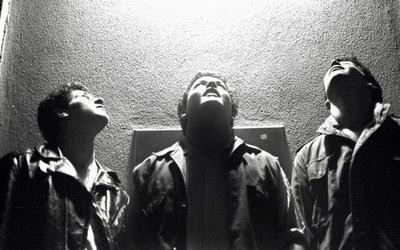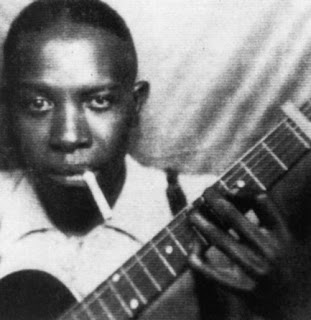 |
| Untitled, 1982. Thanatos, anyone? |
Career: visual artist and musician. Cause of death: heroin overdose, possibly compounded by intravenous coadministration of cocaine.
The prodigious talent of Jean-Michel Basquiat first surfaced in the SAMO tag on the walls of Lower Manhattan. His work as SAMO garnered some media attention due to their unusual deployment: his scrawled & copyrighted SAMO moniker (referring to his slang for 'same old' dirt weed) alongside cryptic lines of street poetry: "Life is confusing at this point. SAMO©" "SAMO© for the so-called avant-garde." The bomb SAMO IS DEAD signalled the end of this period of Basquiat's work.
Subsequently, the down-and-out multilinguial Basquiat formed a band with the still virile and ridiculously multi-talented bastard Vincent Gallo. This project, called Gray, made wicked post-punk experimental electronic ambient klang whee that featured on the most excellent film Downtown '81, a film document of the early-80s Lower East Side art scene made by the Lower East Side art scene for the members of the Lower Eat side art scene plus I suppose those who wanna be the Lower East Side art scene. Like Madonna, with whom Basquiat dated for a bit.
Basquiat's profile slowly built to the point where he was associated with the Neo-Expressionist movement, regularly exhibiting with artists such as Julian Schnabel, who would make a film about Basquiat after his death. In 1982, he met Andy Warhol, and the two would collaborate for the next two years, until Warhol's death/simulacral precession beyond the horizon of mortal presence.
At his pinnacle, he rubbed shoulders with David Bowie, these shoulders clad in $1000 Armani suits which he painted and partied in, paint-splattered, elegantly wasted, having laid claim to the dubious honour of first international art star of African descent. Dubious because such an honour is surely bestowed by canon-making/purchasing wealthy white men, as per.

After Warhol, Basquiat became increasingly isolated, and his heroin addiction and depression became more severe. A shortlived sobriety trip to Hawaii was of no avail. The young talented hotheaded Basquiat died of a heroin overdose (possibly a speedball*) in his SoHo New York studio.
 *Speedball: usu. intravenously administered admixture of heroin and cocaine. It's like when you mix raspberry and coke(-a-cola) from the soda fountain into one tall, iced hit of a softdrink draught for that added tastebud-busting whee.
*Speedball: usu. intravenously administered admixture of heroin and cocaine. It's like when you mix raspberry and coke(-a-cola) from the soda fountain into one tall, iced hit of a softdrink draught for that added tastebud-busting whee.





















